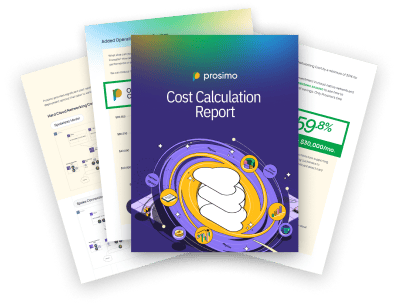Cloud data egress costs are often an unexpected burden for many organizations early in their cloud migration journey. Unlike fixed costs for cloud services such as virtual machines and storage, the cost of transferring data out of the cloud can be variable and unpredictable.
Once organizations become aware of this, they often rethink their application architecture to minimize data transfer between network segments. This can be achieved by employing techniques like compression and deduplication or by incorporating a caching layer to reduce the volume of data moving across the network.
Ideally, businesses transitioning to the cloud should plan their applications with these strategies from the start to not only lower data transfer expenses but also enhance overall performance and efficiency. Taking these proactive measures can significantly reduce unexpected costs and optimize cloud usage.

What Is Cloud Data Egress?
Cloud data egress refers to any data that exits a cloud provider’s network and is transferred to another location. This destination could be an on-premises data center, a different cloud data center in another region, an “availability zone” (data center) within the same cloud service, or even another virtual network within the same data center.
Cloud providers often have varying and complex pricing models for data egress, making it crucial to understand how these charges are calculated. For instance, regions consist of multiple data centers within a defined geographic area, offering robust network connectivity to support high-availability applications across regions. However, when data is transferred from one region to another, it is metered and typically charged based on the volume of data moved, measured in gigabytes.
Availability zones represent another key concept in cloud service architecture. While the terminology may differ slightly between cloud providers—terms like “availability domains” or simply “zones” are common—the concept remains the same: multiple data centers within the same region with separate network and power sources, designed to reduce the risk of simultaneous failure. Cloud providers encourage the use of multiple availability zones for enhanced resilience and high availability, but data transferred between these zones is also metered and may incur additional charges per gigabyte.
Understanding these nuances is essential for managing cloud data egress costs effectively and planning for optimal data flow strategies.
Are Cloud Data Egress Costs Significant?
Organizations enjoy numerous benefits when they move IT systems to the cloud, including modern cloud economics, faster IT enhancements, higher availability, and quicker access to new technologies like machine learning and artificial intelligence.
However, a potentially overlooked aspect of cloud economics is data egress costs, which can significantly impact budgets. Cloud service providers track and meter the movement of data leaving their network, whether it’s moving between regions, availability zones, or virtual networks within the same region. While inbound traffic, or data ingress, is almost always free regardless of volume, outbound traffic, or data egress, is metered and charged differently based on factors like destination, service type, and network path.
How Data Egress Charges Accumulate
Typically, cloud providers charge a fixed rate per gigabyte for data egress, with discounts available for high-volume transfers beyond a certain threshold. This can include standard network traffic, such as data moving between cloud virtual machines, or more cost-sensitive scenarios like serving content from cloud storage to the internet. For example, websites and mobile applications often use cloud object storage services, like AWS S3, Azure Blob Storage, or Google Cloud Storage, to serve media files. This architecture optimizes performance and developer efficiency but incurs costs for both storage read operations and data transferred to the internet.
Applications with high traffic volumes, especially those hosted across multiple cloud regions, can accumulate significant egress costs if their assets are stored in a single, remote region. Although many established websites mitigate these expenses by using content delivery networks (CDNs) to distribute assets closer to users, new or rapidly expanding sites might not yet be optimized for CDN usage, resulting in higher egress charges.
Beyond web applications, various cloud architectures can incur substantial data egress fees, including traffic between virtual machines and databases, virtual network peering, and private links to platform-as-a-service offerings. Understanding and managing these costs is crucial for organizations to effectively control cloud spending while still leveraging the cloud’s benefits. Taking proactive steps to optimize data flow can help mitigate unexpected expenses and ensure more predictable budgeting.
Key Takeaways
- Cloud data egress costs are influenced by the design of your application architecture. Optimizing system design and utilizing specific technologies can help reduce these expenses.
- Understanding the impact of data flows on egress costs is crucial when migrating systems to the cloud.
- Egress costs vary depending on the cloud service provider and the chosen network path.
- For organizations with high data egress needs, investing in a dedicated network connection may be more cost-effective.
- Cloud providers charge for all egress traffic, including that from platform-based services like storage and databases.
- Proactively managing data egress can help control and potentially lower costs associated with cloud services.
Why Cloud Providers Charge for Data Egress
Cloud providers impose data egress charges to recover the significant infrastructure costs associated with building and maintaining their extensive global networks. These networks, which connect their data centers and facilitate seamless data transfer between locations, require massive investments, often amounting to millions or even billions of dollars. A notable example is Microsoft’s 2017 investment in a 4,104-mile undersea cable connecting the US East Coast to Spain, demonstrating the scale of infrastructure needed to support cloud services.
Beyond initial construction, cloud providers continuously invest in maintaining and enhancing the reliability and performance of these networks. Egress charges help fund these ongoing improvements, ensuring that customers receive high-quality, reliable service without having to manage complex, multi-provider global networks themselves.
While these charges may seem frustrating, they are a necessary part of the cost for leveraging the robust and scalable infrastructure of the public cloud.
Why Cloud Data Egress Costs Seem So High
One key reason cloud data egress costs appear so substantial is the difference in billing transparency between public cloud and on-premises deployments. In the cloud, all expenses—covering storage, servers, networking, and other services—are consolidated into a single invoice. In contrast, on-premises deployments typically involve multiple invoices from various vendors, spread out over time.
Additionally, companies must separately cover costs for data center power, cooling, rent for colocation facilities, and software or support, which often obscures the total expense. For IT managers unfamiliar with the consolidated nature of cloud billing, receiving one comprehensive invoice can be quite a shock.
Another factor is the variability of cloud costs compared to the fixed expenses of on-premises deployments. Public cloud providers offer flexible, variable-cost solutions that adjust with changing cloud computing demands, which helps prevent overpaying for unused capacity. While this model is beneficial for managing fluctuating workloads, misconfigurations or poorly designed systems can lead to unexpectedly high cloud bills. Understanding and managing these variables is crucial to avoid sticker shock and ensure that cloud investments are optimized for cost efficiency.

How Are Egress Fees Calculated?
Data egress charges in the cloud are calculated based on several factors, and the exact methods can vary depending on the cloud provider and the type of service being used. However, the general process follows a similar pattern:
- Data Metering: Cloud providers use sensors embedded within their services to monitor and record all outbound data traffic. This allows them to measure the volume of data leaving the cloud.
- Data Aggregation: The recorded data egress volumes are aggregated across all regions and services for each customer.
- Free Egress Allowance: Some providers offer a certain amount of “free” data egress per month. For instance, a customer might get up to 100 GB of egress at no cost. Beyond this allowance, charges are applied based on the volume of data transferred.
- Billing: At the end of each monthly billing cycle, customers are invoiced for their total data egress, along with any additional services used.
Real-World Examples of Egress Costs
- Azure Example (as of June 2023):
- The first 100 GB of outbound traffic per month is free.
- Each additional GB costs $0.087.
- For 10 TB (10,240 GB) of data egress, the total cost would be $882.18.
- The per-GB cost drops to $0.083 after 10 TB and $0.07 after 50 TB.
- AWS Example:
- Data Ingress: Uploading 1 TB of data to an S3 bucket has no inbound transfer cost.
- Data Transfer Costs:
- 4 TB transferred to another AWS region outside the US costs $81.92 (at $0.02 per GB).
- 2 TB transferred to the internet costs $184.32 (at $0.09 per GB).
- Total storage cost is $23.55, but the data egress charges far exceed this amount, highlighting the importance of understanding and managing egress traffic.
Strategies to Reduce Egress Costs
One effective way to reduce data egress costs is to use a Content Delivery Network (CDN). CDNs cache data closer to users and distribute it through the CDN provider’s network, reducing the volume of traffic that must be served directly from the cloud, which often costs less than direct data egress charges. For example, a high-traffic website could see significant savings by utilizing a CDN to offload data delivery from cloud storage.
Provider Comparisons
When managing multi-cloud environments, understanding and optimizing data egress costs is essential. Prosimo offers advanced cloud networking solutions that help you navigate these complexities by providing visibility and control over your data flows. Their cloud platform allows organizations to optimize data transfer across different cloud providers, minimizing egress costs through intelligent routing and efficient data management. By leveraging Prosimo’s capabilities, businesses can ensure cost-effective cloud usage while maintaining high performance and security standards.
By accurately estimating your data egress needs and exploring options like CDNs and provider-specific benefits, you can better manage and reduce your cloud expenses.
Discover how Prosimo can help you manage your cloud expenses more effectively.

Effective Ways to Monitor and Control Data Egress Costs
Data egress charges can rise unexpectedly if left unchecked, as demonstrated in various cases. This unpredictable cost structure means that simple misconfigurations, like connecting to an incorrect endpoint in a geo-replicated storage account, can quickly cause cloud expenses to spiral out of control. So, how can your IT team effectively handle this challenge?
It’s essential to assess your cloud data egress costs early on to avoid excessive spending. Here are five actionable strategies to help you stay on top of these expenses:
Design with Cost in Mind
Designing with cost efficiency in mind is crucial. There are multiple strategies to architect systems that help lower expenses. One effective approach is to monitor systems for outbound network traffic.
By identifying the systems generating the most outbound traffic, you can implement cost-saving techniques like reducing data transfer, compressing network streams, and utilizing caching solutions such as Content Delivery Networks (CDNs).
Additionally, setting up alerts for unusually high outbound network traffic is a best practice. This proactive measure helps you catch potential overages early in the month, preventing unexpected and hefty bills later on. Prioritizing cost management from the start can significantly impact your bottom line.
Monitor Data Egress Costs
Keep an eye on data egress costs. Most cloud providers offer Cloud Service Expense Management (CSEM) tools that enable businesses to monitor their current spending. Regularly reviewing these metrics will help you spot trends and anomalies, enabling proactive management of expenses.
Tag Cloud Resources with Cost Centers
Tag cloud resources with the appropriate cost center. All cloud providers offer the ability to tag resources with “key: value” pairs, such as “Cost Center: Finance.” These tags are essential for both cloud automation and financial tracking. By tagging resources, the costs associated with each application and department are reflected in the customer’s bill, making it easier for IT teams to monitor spending and allocate expenses accurately to the respective cost centers. This practice enhances visibility and control over cloud expenditures.
Create Budgets and Set Alerts
Establish budgets and set alerts to monitor them effectively. Most major cloud providers offer the capability to link a budget with their alerting systems, allowing administrators to receive notifications when expenses exceed the planned amount.
This is particularly crucial for new projects where initial costs can be unpredictable. Implementing budget alerts ensures that you stay informed and avoid unexpected overages, helping you maintain control over your cloud spending from the start.
Store Data Near Users
Store data close to your users. While this might sound straightforward, it’s crucial for minimizing data egress costs. If users are running reports from a cloud-based database to a local server, significant data egress can occur. High-volume egress may sometimes be unavoidable, particularly during a cloud migration, but keeping data storage near your users is vital for optimizing both performance and cost.
This is especially important for storing objects like website images. Additionally, make use of caching options to further reduce outbound data and enhance efficiency. Managing data location and proximity can significantly impact your cloud expenses.
By following these strategies, you can gain greater control over your data egress expenses and avoid unexpected spikes in cloud costs.

Ways to Minimize Cloud Data Egress Fees
Monitoring and managing egress fees is one challenge, but reducing them requires a more in-depth approach. To effectively lower egress costs, enterprise IT teams must delve deeper into the technical stack. By optimizing data flows, implementing efficient data transfer strategies, and leveraging advanced configurations, teams can significantly cut down on unnecessary egress expenses. Taking these steps will help mitigate costs while maintaining performance and functionality.
Use a Content Delivery Network (CDN)
A Content Delivery Network (CDN) caches an organization’s website assets at edge locations closer to the customer after reading them once. This means that when a customer requests an image or file from your website, it is delivered from the CDN instead of directly from your cloud-hosted web server.
The costs associated with using a CDN are significantly lower than data egress charges, and they provide customers with faster load times. Although implementing a CDN may require minor modifications to your application code, the substantial cost savings and improved performance make it a highly beneficial solution for most businesses.
Compress Network Traffic Wherever Possible
Compressing network traffic isn’t always feasible, but it’s often possible for infrastructure traffic, such as VM-to-VM communication over a virtual network. This type of traffic can typically be compressed with minimal impact on CPU usage.
The slight increase in CPU consumption is significantly less expensive than the high costs associated with network egress fees. By implementing compression for internal traffic, organizations can achieve substantial cost savings without compromising performance.
Choose Cloud Services Carefully
Many cloud services offer multiple options for similar functionalities, even within the same provider. For instance, AWS has nearly 20 different methods to run a container. During the planning phase, organizations should evaluate and compare the costs of each option, including network charges, which can differ substantially.
This careful cost analysis ensures that you choose the most cost-effective solution that meets your needs, avoiding unnecessary expenses while optimizing resource use.
Use a Dedicated Network Connection
A dedicated network connection between your site and the cloud provider may come with a high initial cost, but it offers unlimited use of the connection once established. For organizations that require large amounts of cloud data egress, investing in a private link can significantly lower the total cost of ownership over time. This solution provides predictable costs and improved performance, making it a valuable option for businesses with heavy data transfer needs.
Move Complete Applications to the Cloud
In hybrid cloud setups where data flows between on-premises and cloud-hosted systems, consider migrating entire applications to the cloud. Consolidating all components of an application within a single cloud environment reduces the need for data to traverse between on-premises and cloud infrastructure, thereby minimizing egress fees. This all-cloud approach can simplify data flows and reduce costs associated with outbound traffic.
Implementing these strategies may require significant changes to existing applications and infrastructure, particularly for production systems. However, the potential cost savings can make these efforts worthwhile. For organizations with substantial data egress needs, establishing dedicated network connections like ExpressRoute and Direct Connect can also provide discounted rates on data transfers compared to standard egress charges, further optimizing cloud spending.
Conclusion
Effectively reducing cloud network egress costs requires a strategic approach that combines careful planning, resource optimization, and the use of cost-saving technologies. By designing with cost in mind, monitoring data egress, tagging resources, and setting up budget alerts, organizations can gain better control over their cloud expenses. Storing data close to users and leveraging CDNs can significantly minimize data transfer fees while improving performance. For businesses with high data egress needs, investing in dedicated network connections can be a cost-effective solution. As cloud usage continues to grow, proactive management of egress costs becomes essential for maintaining an efficient and budget-friendly cloud environment. Implementing these best practices will not only reduce unexpected expenses but also ensure a more sustainable cloud strategy in the long run.
FAQs
1. What is cloud data egress?
Cloud data egress refers to the transfer of data out of a cloud provider’s network to another location, such as on-premises data centers, other cloud regions, or the internet.
2. Why are cloud data egress costs so high?
Egress costs reflect the significant infrastructure investment cloud providers make to maintain robust global networks, and they help cover ongoing network maintenance and enhancements.
3. How can I reduce cloud data egress fees?
You can reduce egress costs by using CDNs, compressing network traffic, storing data closer to users, and choosing the most cost-effective cloud services for your needs.
4. What is a dedicated network connection, and when should I use it?
A dedicated network connection, like AWS Direct Connect or Azure ExpressRoute, provides unlimited use for a set fee and is ideal for organizations with high data egress needs to reduce overall costs.
5. How are data egress fees calculated?
Data egress fees are based on the volume of data transferred out of the cloud, measured per gigabyte, and vary depending on the destination and the cloud provider’s pricing structure.
